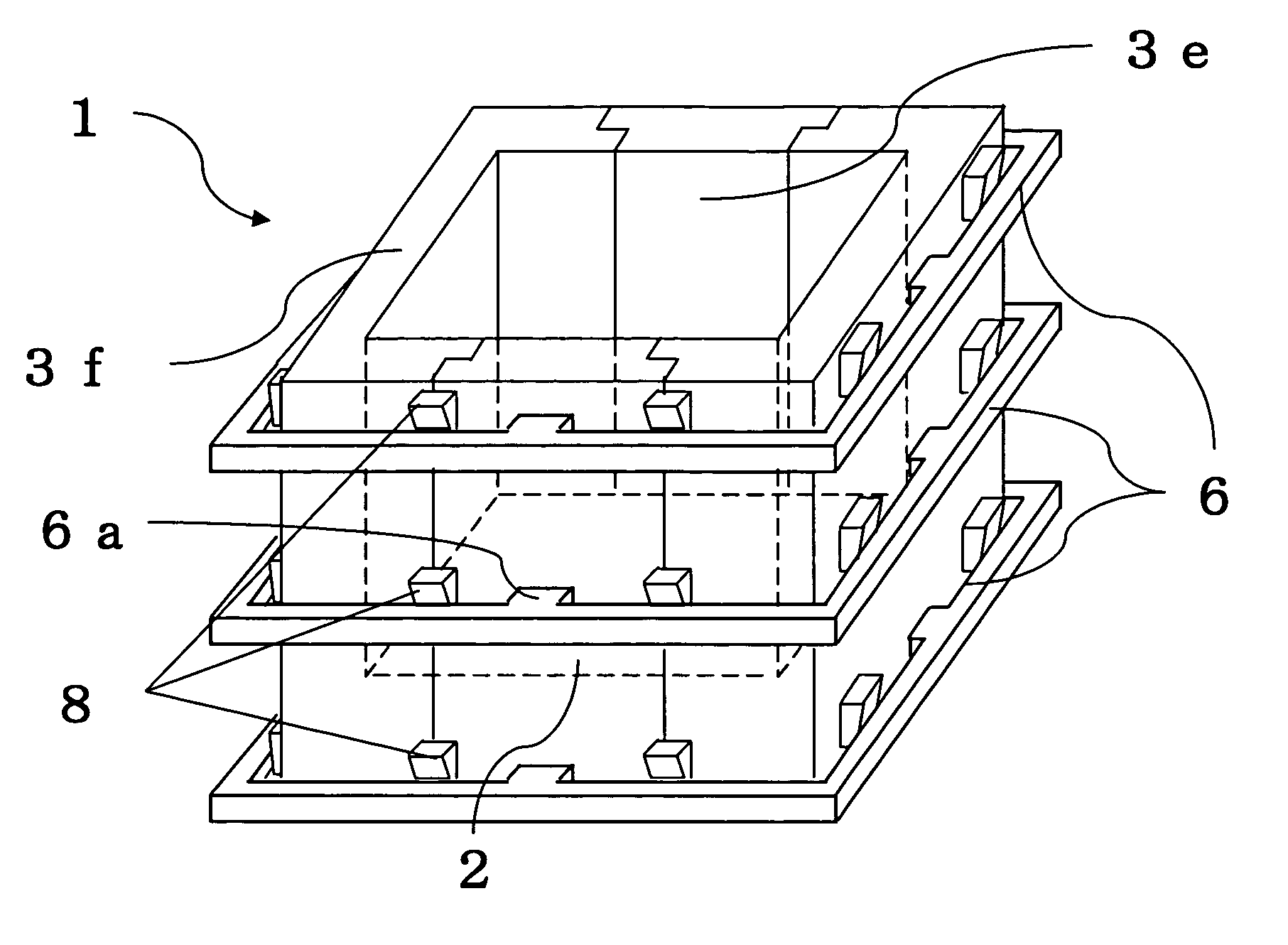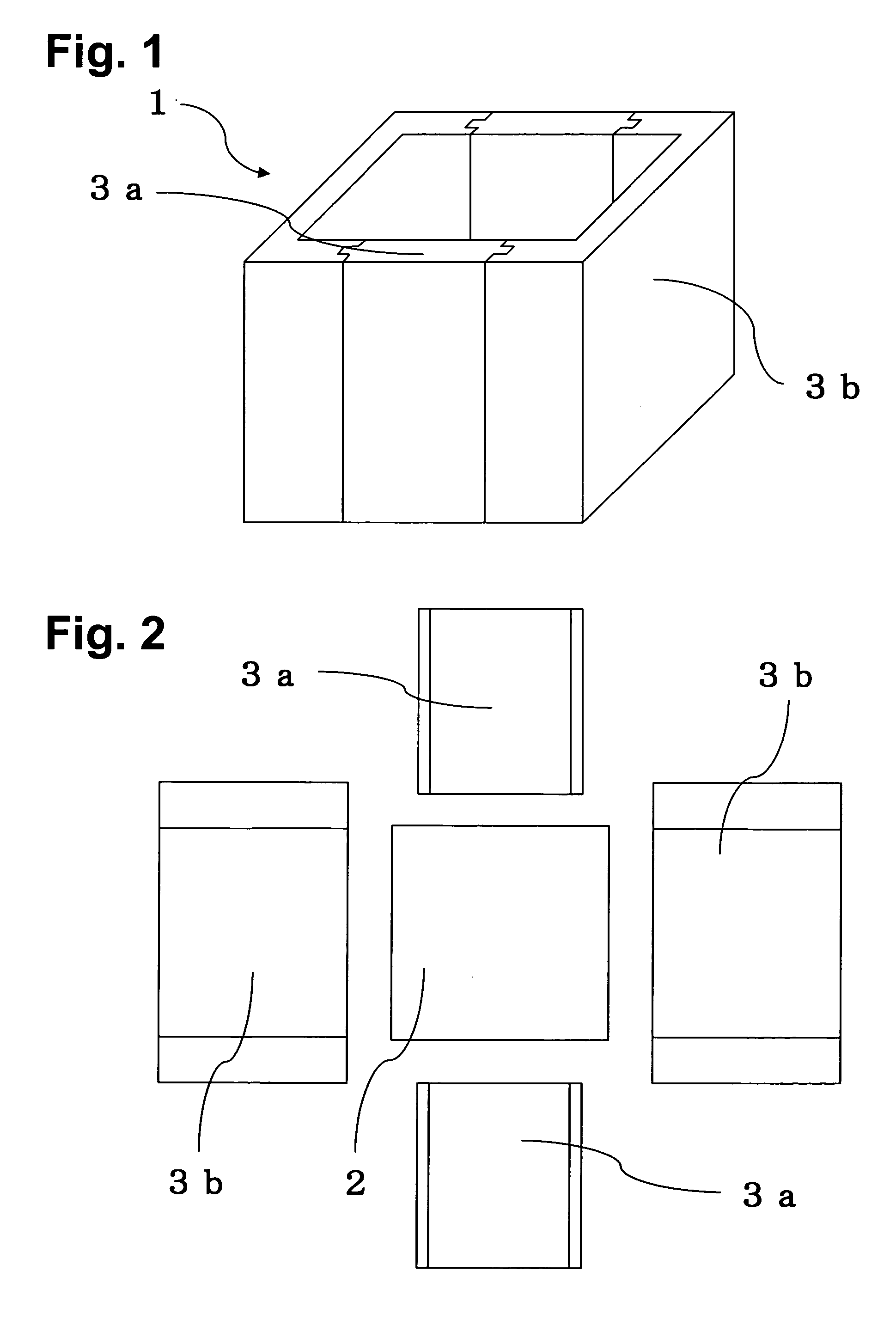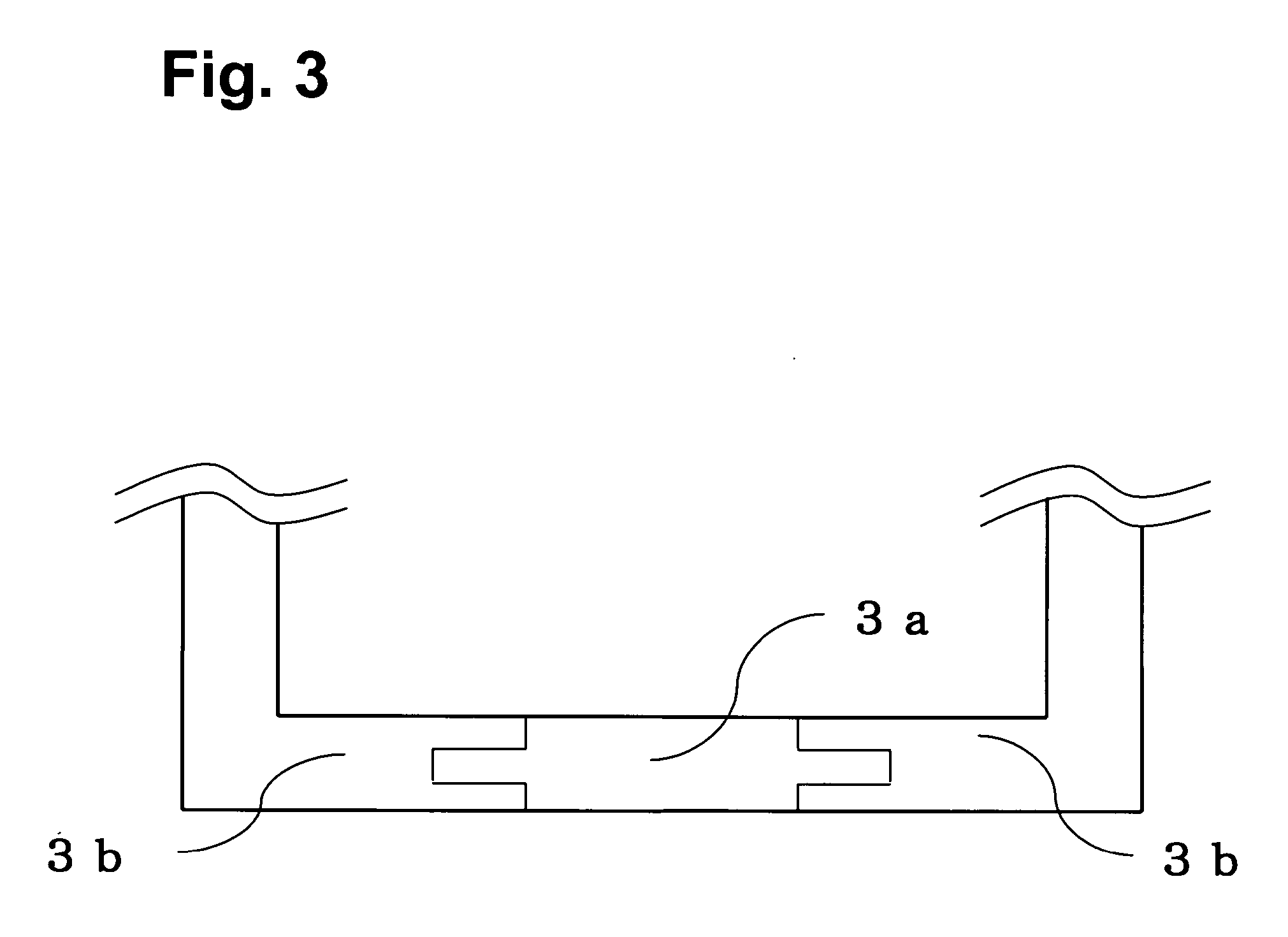Molding assembly for forming ingot and a method of forming ingot
a molding assembly and ingot technology, applied in the direction of moulding machines, crystal growth processes, chemically reactive gases, etc., can solve the problems of high cost of manufacturing the substrate, wear of the molding device, and difficulty in recycling the molding devi
- Summary
- Abstract
- Description
- Claims
- Application Information
AI Technical Summary
Benefits of technology
Problems solved by technology
Method used
Image
Examples
example
[0078] When a molding device assembled by using screws is compared with the molding device 1 according to the embodiment of the invention shown in FIG. 16, the following result may be expected.
[0079] A bottom member (20 mm in thickness) and four side members (20 mm in thickness), made of graphite and coated with a mold release material made of silicon nitride, may be assembled into a box shape, and fixed by forty screws (ø 5 mm x 40 mm in length), thereby obtaining a molding device (350 mm × 350 mm in inner dimension × 350 mm in height). Then, 90 kg of a molten silicon material is poured into the molding device obtained as described above, and by gradually decreasing a temperature of the molten silicon material from the bottom of the molding device, it is expected that a silicon ingot with 315 mm in height can be obtained.
[0080] For the molding device according to the embodiment of the present invention as shown in FIG. 16, the bottom member 2 (10 mm in thickness), two first side ...
PUM
| Property | Measurement | Unit |
|---|---|---|
| length | aaaaa | aaaaa |
| density | aaaaa | aaaaa |
| density | aaaaa | aaaaa |
Abstract
Description
Claims
Application Information
 Login to View More
Login to View More - R&D
- Intellectual Property
- Life Sciences
- Materials
- Tech Scout
- Unparalleled Data Quality
- Higher Quality Content
- 60% Fewer Hallucinations
Browse by: Latest US Patents, China's latest patents, Technical Efficacy Thesaurus, Application Domain, Technology Topic, Popular Technical Reports.
© 2025 PatSnap. All rights reserved.Legal|Privacy policy|Modern Slavery Act Transparency Statement|Sitemap|About US| Contact US: help@patsnap.com



